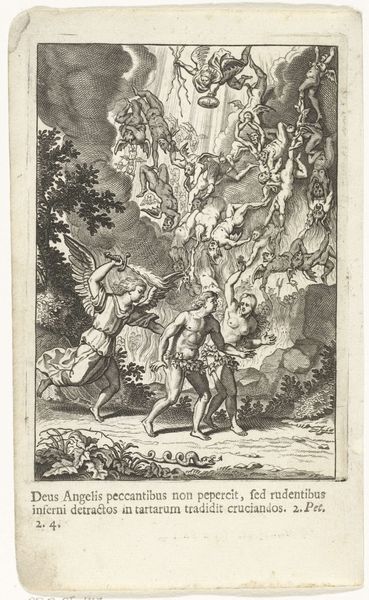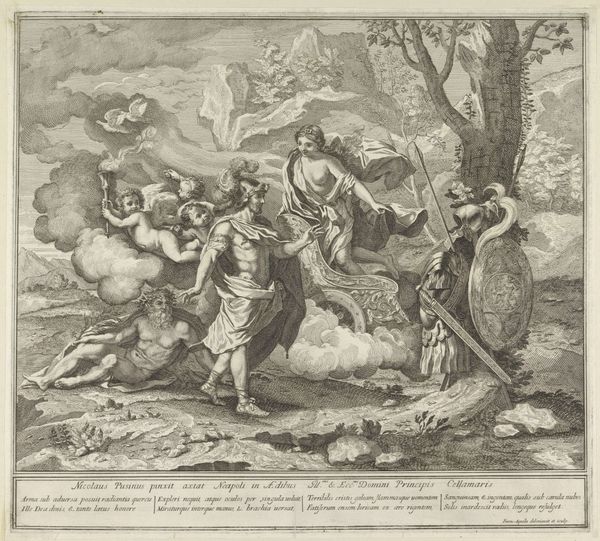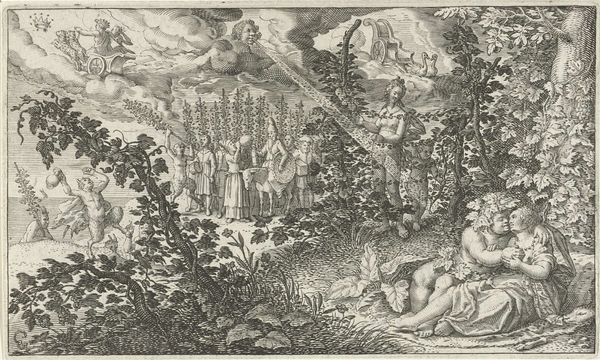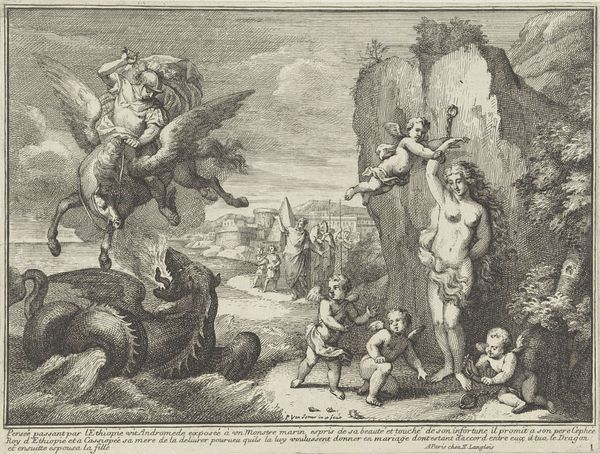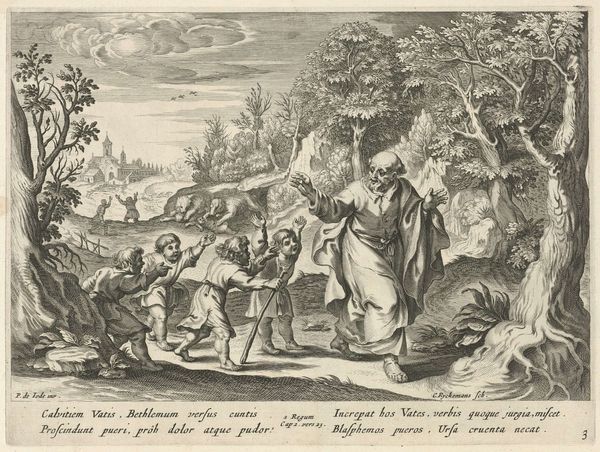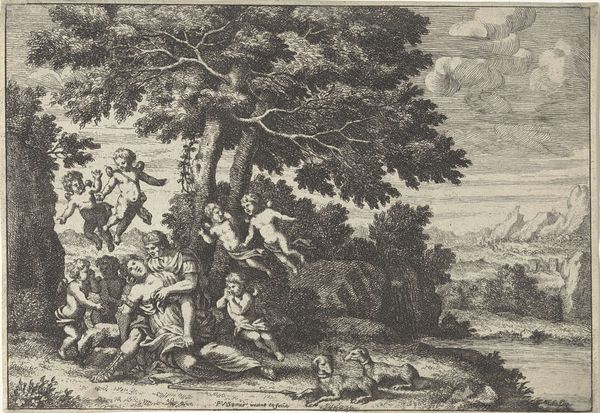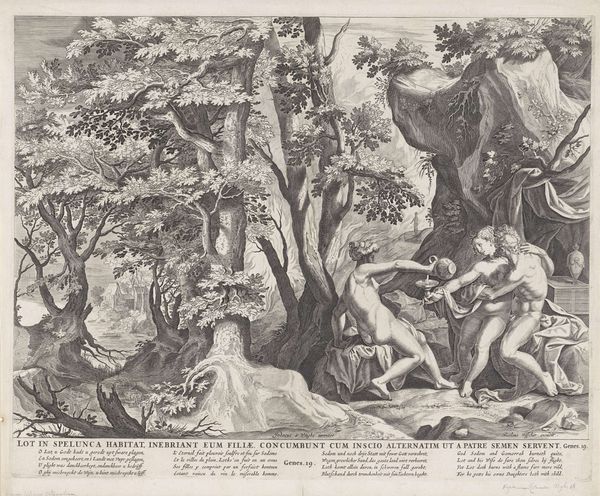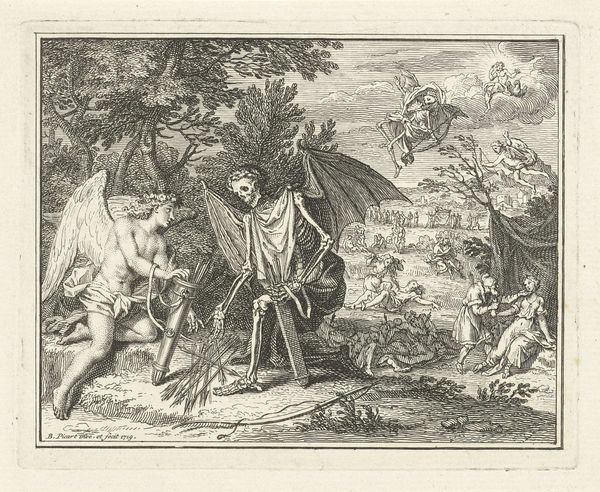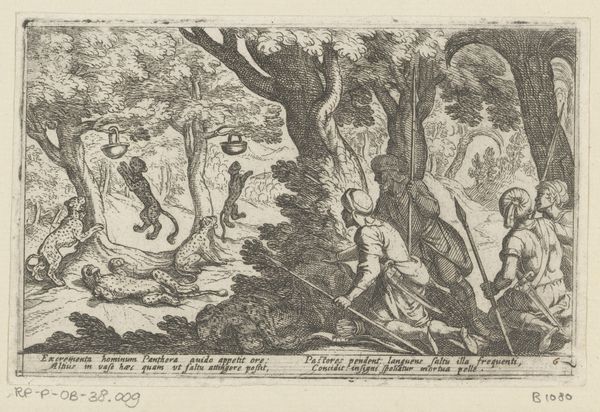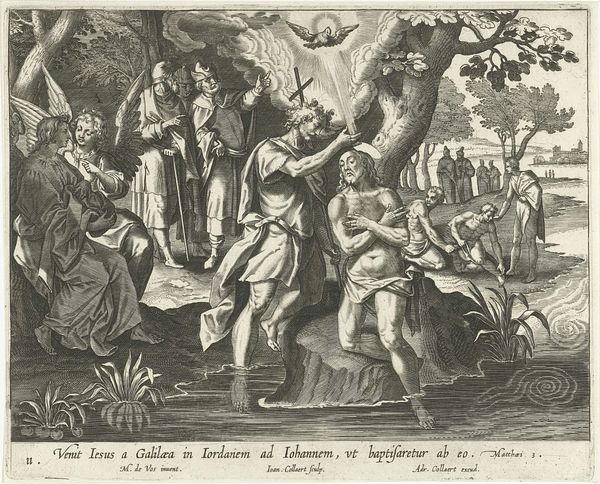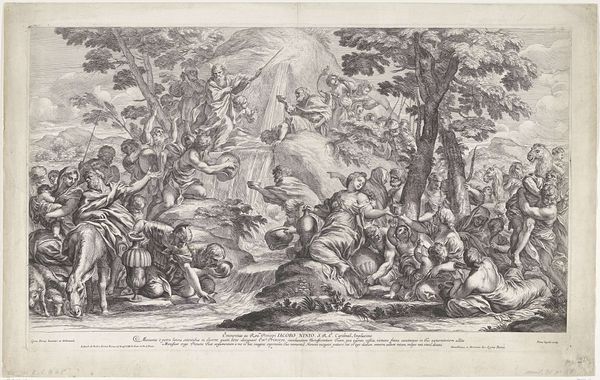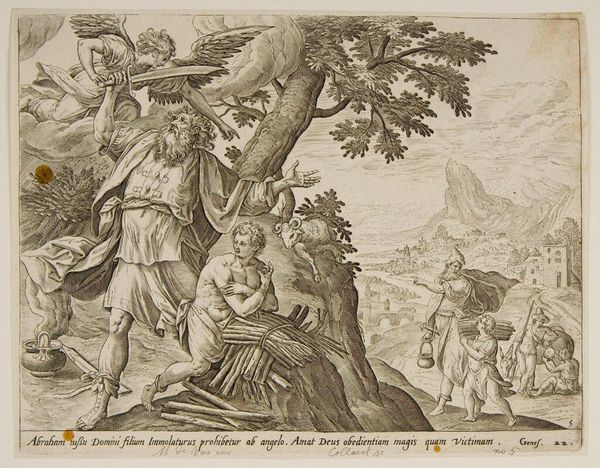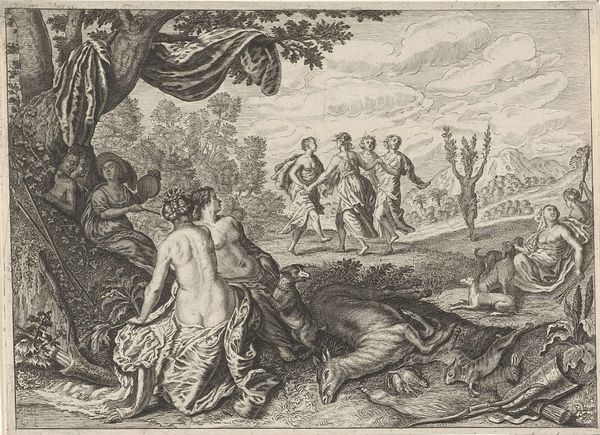
engraving
#
allegory
#
baroque
#
landscape
#
classical-realism
#
history-painting
#
engraving
Dimensions: height 187 mm, width 248 mm
Copyright: Rijks Museum: Open Domain
Curator: I'm immediately struck by the dramatic dynamism rendered entirely through linear precision. Editor: Indeed! Here we have Paul van Somer II's 1677 engraving, "Apollo en Daphne," currently housed at the Rijksmuseum. It vividly illustrates a key moment from Ovid's *Metamorphoses.* The detail packed into this medium is rather powerful, I must admit. Curator: Absolutely, this speaks to how mythology is sustained through these potent visual symbols. The transformation, the pursuit, the helplessness... It’s a loaded iconography. Notice how Daphne raises her arms skyward, branches erupting in place of her fingers, while the river god Peneus, her father, languidly reclines, orchestrating her metamorphosis in response to her appeal to escape from Apollo's desires. It’s rich with symbols of agency, transformation, and, arguably, its denial. Editor: But it’s critical to examine that “agency” within the power dynamics at play. Daphne’s escape isn’t empowerment; it’s a loss of self. A painful choice imposed by patriarchal structures. To read her transformation only through the lens of "metamorphosis" ignores that, within the Classical period's art traditions, there exists repeated visuals where female figures are fleeing sexual aggressors who wield considerable dominance and power, from Zeus on down. She chose to cease existing as herself in a desperate avoidance. This is the stark social and historical context driving that urgent narrative, that’s the violence baked into that supposedly transformative gesture. Curator: I acknowledge that your take may focus too much on one-note political implications; my focus involves decoding the image's intent to capture profound, multi-layered emotional and spiritual resonance with our deepest psychic anxieties of forced change and the limitations of freedom versus predestined roles. You will admit the landscape is itself allegorical, the very mountains and rivers seemingly witness, echoing, the psychological turmoil... The swirling baroque-like figures and carefully considered details draw attention toward the narrative’s heavy meaning. Editor: Still, even these aesthetic considerations shouldn't ignore the fact the era romanticizes these often brutal narratives. It also carries significant implications of consent and coercion that still resonate with present gender inequality. Even how he positions Daphne’s father is a telling position of weakness of protecting his daughter, and more, it tells a tale of masculine irresponsibility. How could a parent leave his daughter into that situation? Curator: Ultimately, the artwork successfully delivers layers of interpretations; between freedom and compulsion, agency and subjugation; our exchange shows that Somer has indeed crafted something truly resonant. Editor: Yes, perhaps the image calls us to re-examine these myths from critical angles. It underscores historical, social, political structures reflected within art to empower audiences for constructive dialogue.
Comments
No comments
Be the first to comment and join the conversation on the ultimate creative platform.
